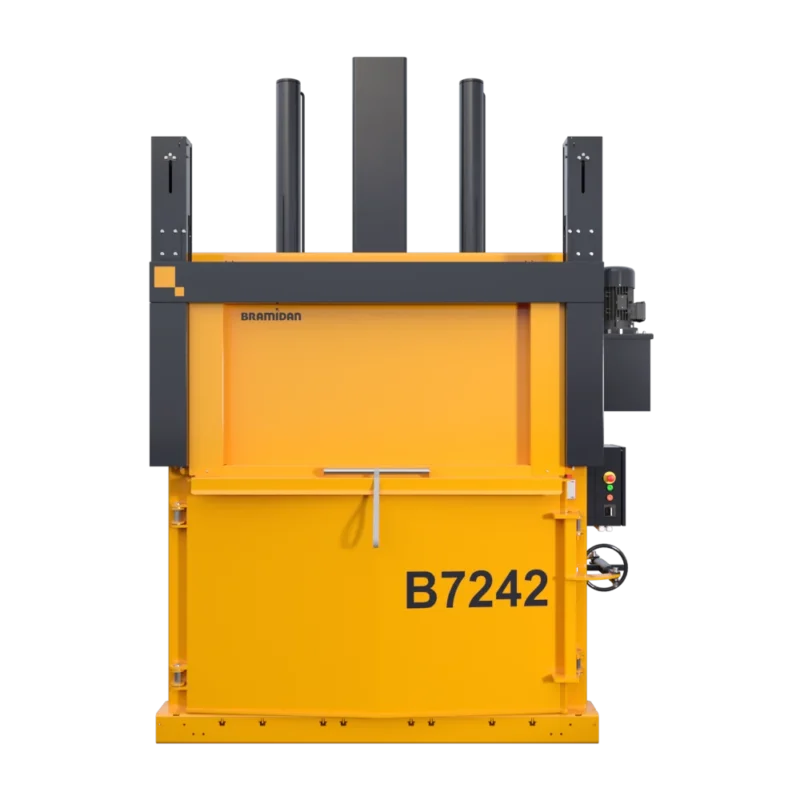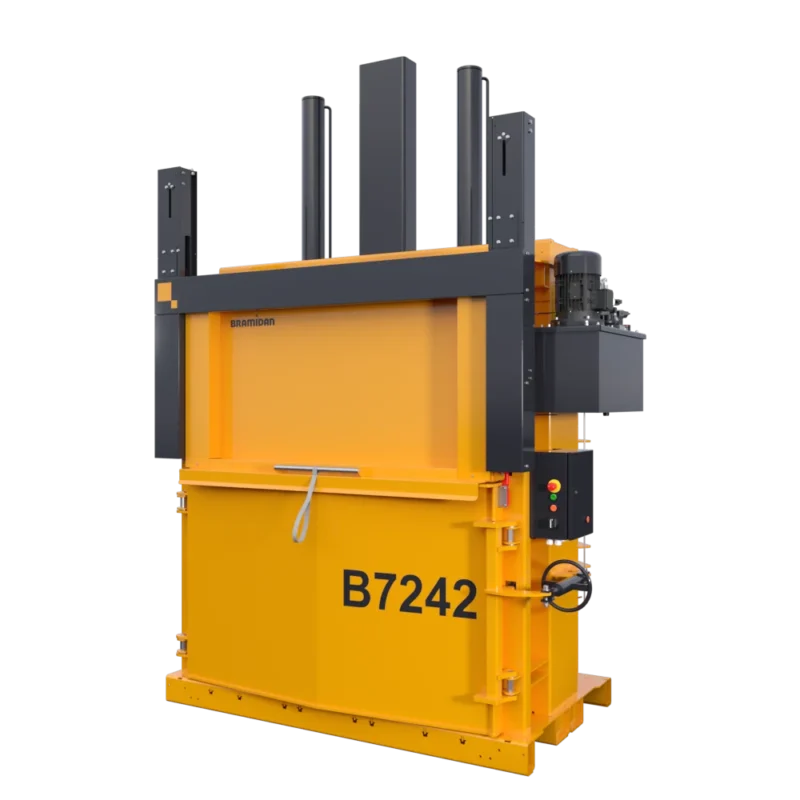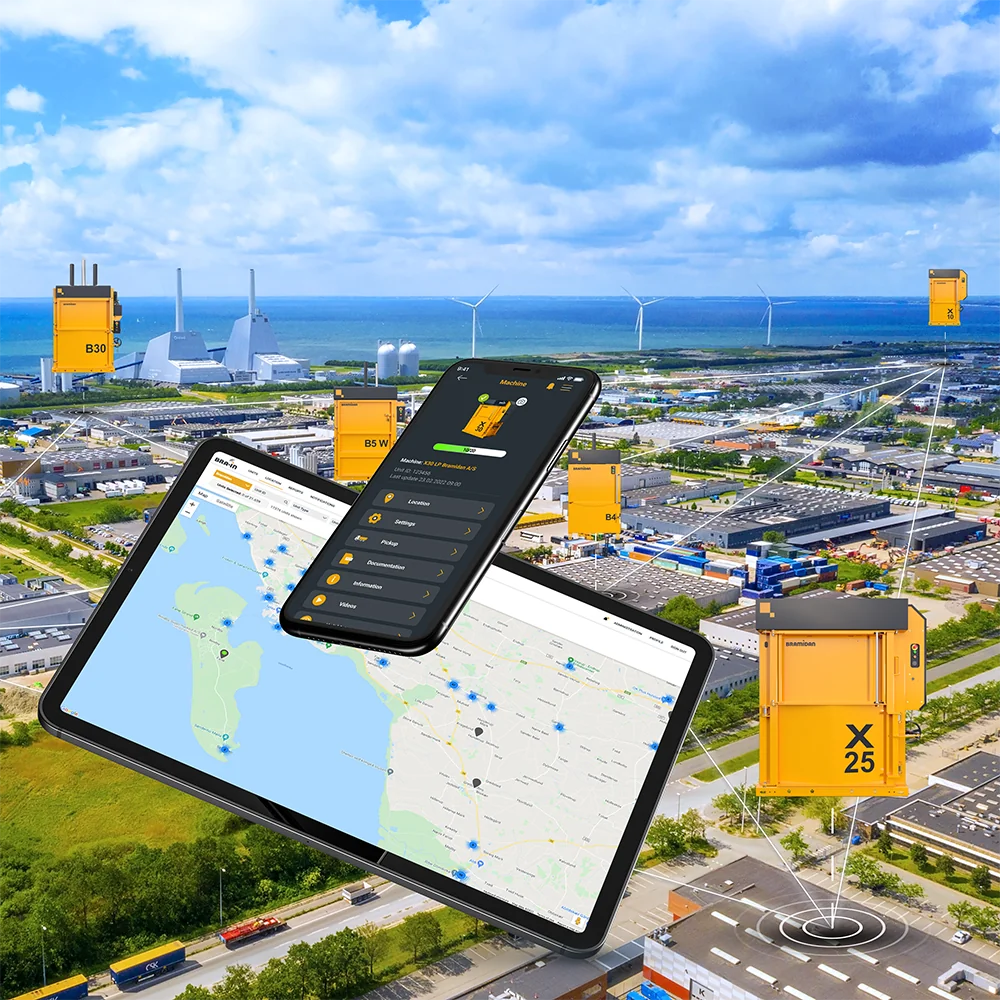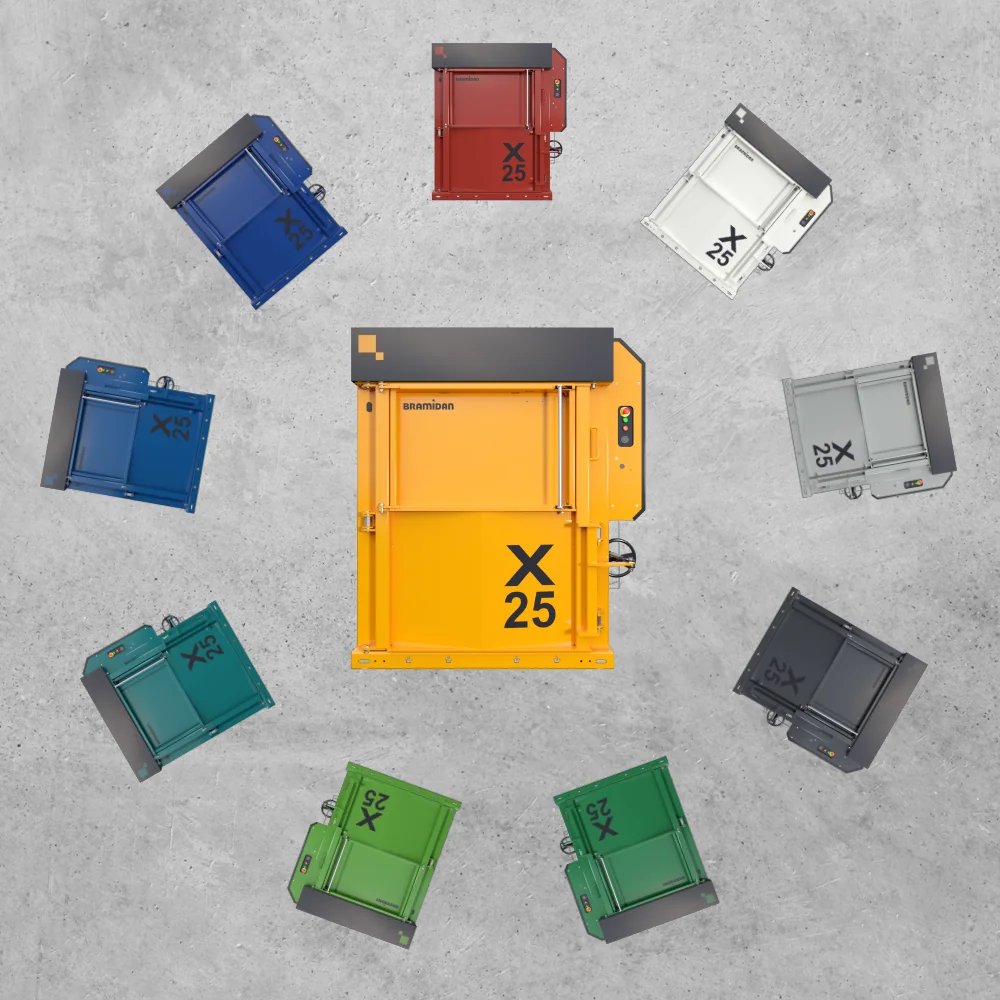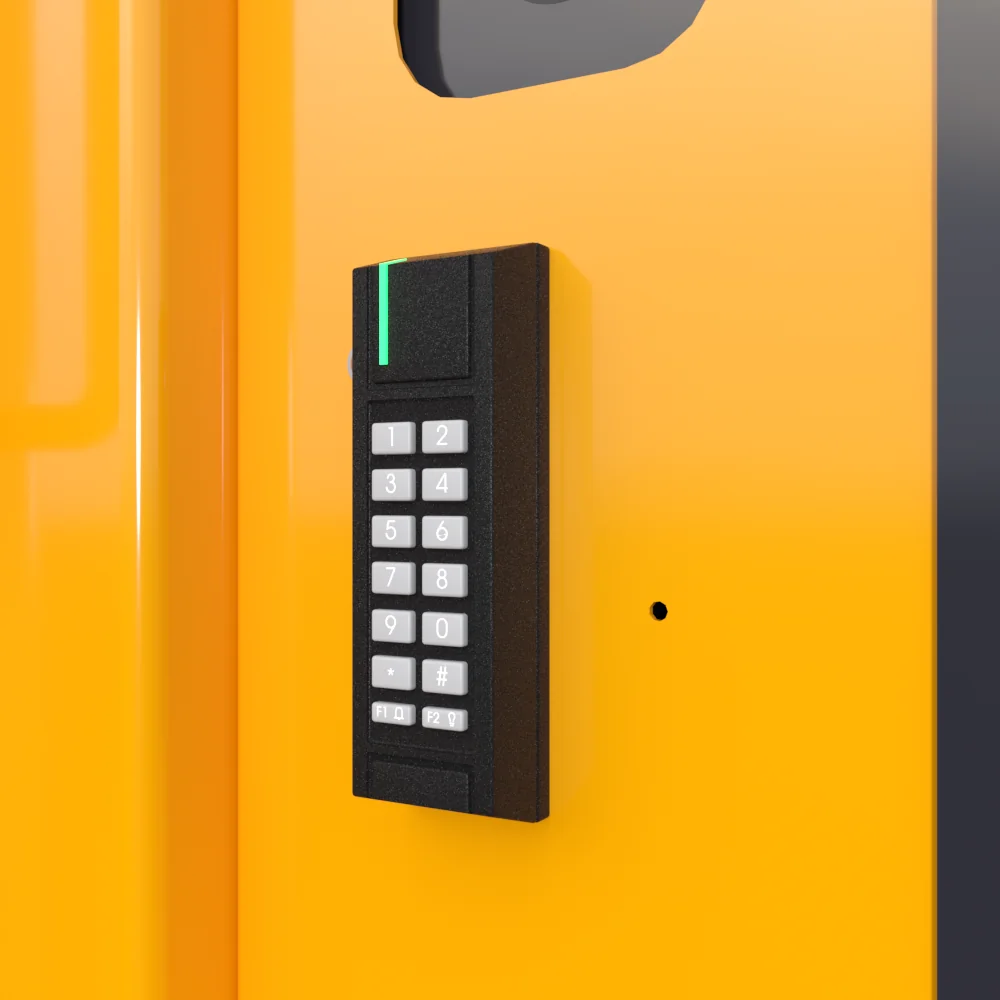Baler B7242 SD
Large, 72″ x 42″ baler
The B7242 baler is a heavy duty 72″ x 42″ baler that will produce bales weighing 1,400+ lbs.
Modern design and high press force
The B7242 is a perfect example of Bramidan’s innovative design combined with a press force of over 110,000 lbs resulting in a machine capable of handling significant loads of cardboard or shrink wrap.
B7242 SD – a 72″ baler for cardboard and stretch wrap:
- 72″ x 42″ bale
- 1,400+ lbs bale weights
- Large load door for large boxes
- 110,000 lbs of press force
- Front tie off for minimal space consumption
- Compliant with ANSI and UL standards
- Powder Coating provides durable finish in many colors
Time-saving and easy waste handling
- Load your recyclables into vertical baler.
- A full-bale light tells you when the baler is full.
- Tie off and eject the compacted bale.
- Remove the bale with a pallet jack for storage untill collection.
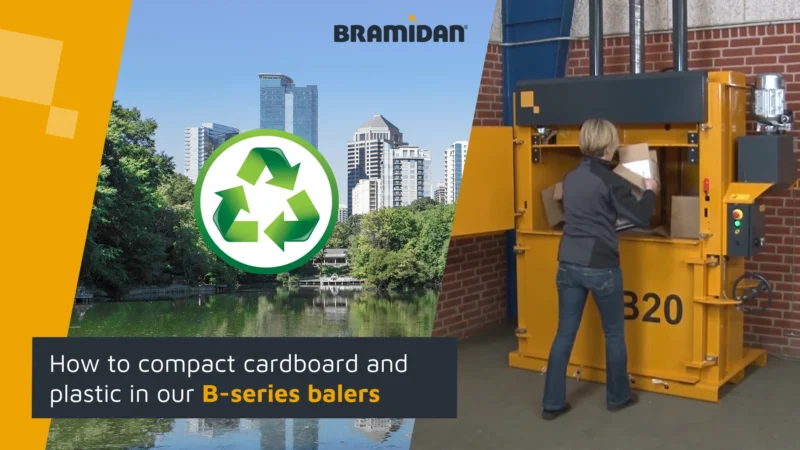
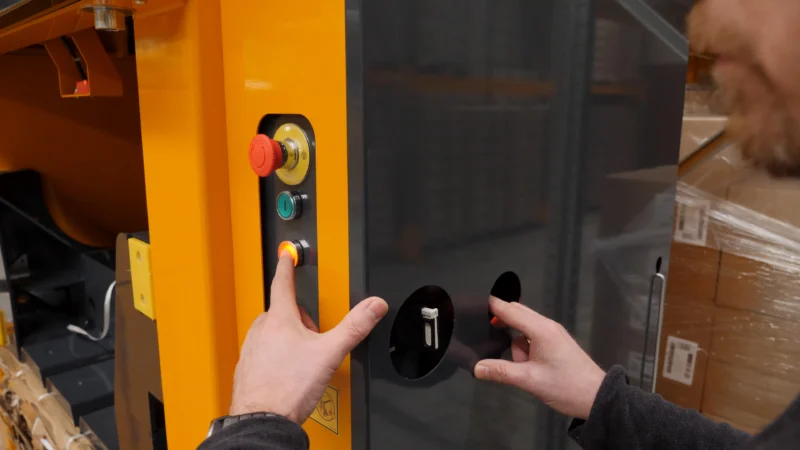
| Bale weight cardboard (lbs) | 1550-1850 |
| Bale weight plastic foil (lbs) | 1550-1850 |
| Press force (lbs) | 110,000 |
| Power supply | 208/230/480V 3-phase 60Hz |
| Motor (HP) | 8.9 |
| Noise Level (dB) | 62-64 |
| Cycle time avg. (sec) | 25 |
| Dimensions WxDxH (inch) | 99 x 65 x 142 / 100 |
| Weight (lbs) | 7,165 |
| Feed opening WxH (inch) | 72 x 26 |
| Load height (inch) | 52 |
| Chamber height (inch) | 72 |
| Stroke (inch) | 44 |
| Number of ties | 8 |
| Type of tying | Twine / Steel wire |
| Full bale light | Yes |
| Bale eject | Automatic |
| Waste volume | Large |
Monitor and Optimize with BRA-IN
With real-time data and automated notifications, you can make better decisions, cut operational costs, and document your sustainability efforts.
BRA-IN stands for Bramidan Intelligence and connects your equipment directly to an easy-to-use platform – letting you track fill levels, optimize pickups, and schedule maintenance – all in one seamless solution.
Combine our BRA-IN services to fit your needs
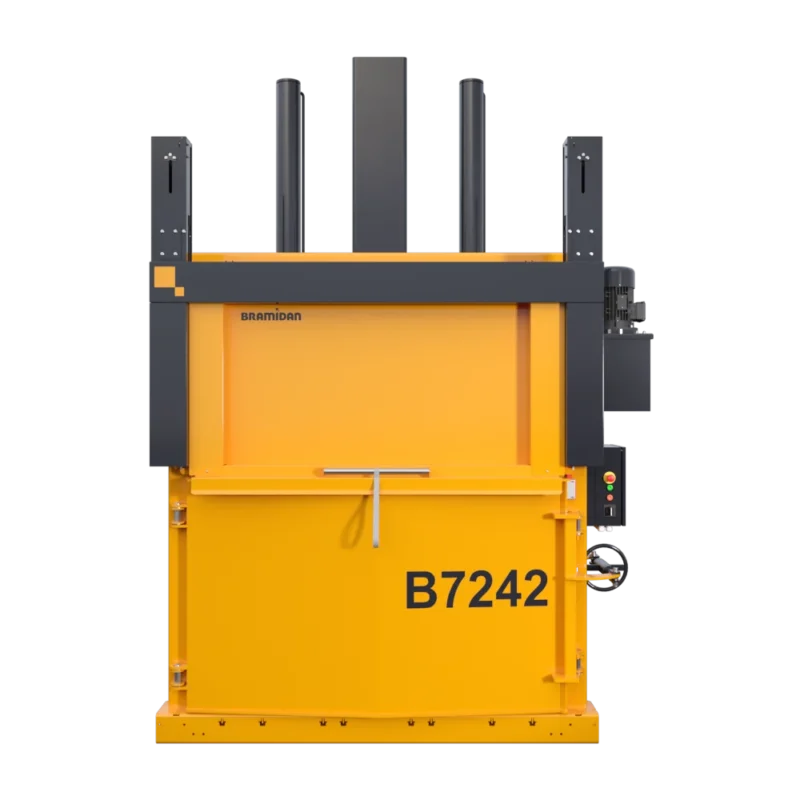
Vertical balers are compact, cost-effective, and well-suited for manual workflows and moderate volumes of waste such as cardboard and plastic. They compress material from the top down and take up minimal space, making them easier to place and install—especially in smaller businesses or locations with limited room.
Horizontal balers are designed to handle larger volumes of waste and offer a higher degree of automation. They compress material from the side and can be integrated with conveyors, shredders, and other automated systems. This reduces the need for manual labor and increases operational efficiency. However, they require more space and a higher investment.
All of our balers are usually very quiet and can be placed in a variety of work environments without causing a disturbance.
Our B-series vertical balers have a very low noise level that never exceeds 57 – 68 decibels. The noise is comparable to that of a vacuum cleaner or air conditioning system.
Our X-series vertical balers have an even lower noise level that does not exceed 59 decibels. The noise is equivalent to conversational speech.
No, our balers do not have a built-in scale. However, the bale size and weight do not fluctuate by much and will usually be the same.
Our BRA-IN monitoring solution allows you to view the average weight and number of bales made in your baler each week and/or month. You can also create reports for recycling compliance.
Yes, we do. Our 60” baler, the B6030, makes bales that meet standard mill-size dimensions and weight specifications. Finished bales weigh 800 – 1,300 lbs., depending on the material.
The low-profile design allows the baler to fit an 8 foot dock door standing up. Once the cylinders are raised, it can be installed and operated under an 11 foot ceiling.
Questions? Contact Us Today




